This article was medically reviewed by Brent Wong, DMD. Dr. Wong is the Owner and Principal Dentist at Shine Dental in Winnipeg, Manitoba. He completed his Doctorate in Dentistry and residency at the University of Manitoba in 2000. Dr. Wong has over 18 years of experience in dentistry and specializes in Dental Implants, Cosmetic Dentistry, Obstructive Sleep Apnea, TMD.
There are 16 references cited in this article, which can be found at the bottom of the page.
This article has been viewed 53,860 times.
Red and inflamed gums can occur for a variety of reasons, such as hormonal changes during pregnancy, but it is most often a sign of gingivitis.[1] Gingivitis is a common and mild form of gum disease that is caused by excess plaque and tartar in the gums. In order to soothe your red and inflamed gums, you need to treat the gingivitis. There are several ways of doing this at home. However, it is still very important that you see a dentist, as only a dentist can remove the hardened plaque that is causing the inflammation in the first place.
Steps
Relieving Discomfort
-
1Eat cold foods. Ice, or ice cold foods such as popsicles, will numb the area that is inflamed. If you just need some temporary relief, and you can't get to a dentist right away, use ice to numb the area.
-
2Apply a numbing agent to the area. A topical benzocaine ointment, such as those used on babies when they are teething, could help ease the pain temporarily. This could be especially helpful before attempting to eat or brush your teeth if your gums are very sensitive.[2]Advertisement
-
3Take over-the-counter pain killers. Ibuprofen is a NSAID (non-steroidal anti-inflammatory drug) that will decrease the swelling. Taking acetaminophen or aspirin can also be an effective short-term solution to your gum pain. Be sure to follow the instructions on the package and only take as many pills as is recommended.
Using Natural Remedies
-
1Soothe sore gums with chamomile tea. Put one tea bag of chamomile in a cup of boiling water. Allow to to steep for five minutes and cool slightly before drinking. Swish the tea around your mouth to sooth your gums before swallowing.
- Aside from chamomile's anti-inflammatory, anti-spasmodic, and muscle-relaxing properties, it can also be used as mouthwash to treat inflammation of the gums and supporting structures of the teeth.[3]
- Its active ingredients come mainly from its leaves, which contain 1-2% volatile oils, flavonoids, luteolin and quercetin.[4]
-
2Prepare a mouthwash of saltwater. Mouthwash made from saltwater can be effective in treating red and inflamed gums because it will cleanse the area and help to kill the bacteria that is causing you discomfort. Simply add a teaspoon of salt to a cup of hot water, stirring it until it is dissolved and then swishing it around your mouth as soon as it is cool enough to do so.[5]
- Make sure that you don't swallow the saltwater. Simply spit it out when you are done swishing it around your mouth.
-
3Use peppermint tablets or capsules. Peppermint extract has 0.1-1.0% oil that is made up of menthol and menthone. These oils act as an analgesic that reduces pain when applied to an inflamed area, such as the gums.[6]
- Use 3 to 6 grams of peppermint tablets or capsules and dissolve in 10 ml of distilled water as mouthwash. Use once a day.
- Caution: If you have gallstones, consult your physician first before using peppermint extracts.
-
4Use sage leaves. Sage leaves can be used to treat inflammation inside the mouth, throat and tonsils.[7] To make mouthwash, put 2 tsp of chopped leaves in half a liter of water and bring it to the boil. Let it cool down for 15 minutes before using as mouthwash. Swish for 5 minutes several times a day.
- Sage contains alpha and beta-thujone, cineole, camphor, rosmarinic acid, flavonoids and tannins. These ingredients have antibacterial and antifungal properties.
-
5Make mouthwash from myrrh tinctures. The use of myrrh in mouthwash has soothing effects on inflamed tissues inside the mouth.[8] Myrrh can also be used to treat pharyngitis, tonsillitis, gingivitis and ulcers. It can be applied topically to mildly inflamed areas inside the mouth.
- Myrrh contains resin, gum, and nonvolatile oils. The resin component has antimicrobial properties which help the immune system by stimulating activity of the macrophages (type of white blood cell).
- To prepare the mouthwash, add 30 to 60 drops of myrrh tincture to warm water. Swish around your mouth for 30 seconds.
- Alternatively, myrrh tincture can be applied directly onto sore parts of the gums. Use a q-tip to directly apply extracts of myrrh.
-
6Apply aloe vera on sore gums.[9] Aloe vera can be directly applied to red and inflamed gum tissues. It can also be used to cure viral oral lesions, ulcers, and gum abscesses.
- After brushing your teeth, apply a small amount of natural aloe vera gel directly to the inflamed gums. They will feel instantly soothed.
- Apply the aloe vera solution twice per day until the inflammation subsides.
-
7Help gums heal with manuka honey.[10] Natural, untreated manuka honey, from New Zealand, has antimicrobial and wound healing properties. It helps to keep the gums stay moist and provides a protective barrier over them.
- Honey can produce hydrogen peroxide and kill bacteria by dehydrating it. It can be used to treat sore gums, ulcers and other problems inside the mouth.
- Use a q-tip to apply a small amount of 100% pure honey to sore areas inside your mouth. Do this three times a day for five days.
Eliminating Gum Disease and Gingivitis
-
1Visit your dentist. He or she will assess the state of your gums, looking for soft, swollen, or red gums and visible plaque or tarter at the base of your teeth.[11] In addition, your dentist may perform x-rays, in order to assess whether the disease has spread into the bone surrounding the teeth.
-
2Get a professional cleaning. If you already have gingivitis, the dentist will perform a scaling and polishing treatment. In this procedure, calculus deposits and plaque (tartar) are removed from the surface of the teeth. It is recommended that you visit the dentist every six months for a routine scaling and polishing. Because you are having such extreme symptoms, the hygiene appointment will most likely take more than one appointment.
- Scaling: Your dentist uses ultrasonic or manual scalers to remove calculus deposits and plaque from your teeth. These calculus deposits are mineralized and cannot be removed with normal brushing. To tell if you have calculus deposits, run your tongue over the back surface of your teeth — calculus deposits will feel rough. Professional removal of plaque greatly improves periodontal health.[12]
- Polishing: After the calculus deposits have been removed the dentist will polish your teeth. To do this, the dentist or dental hygienist will use a polishing paste and a rubber brush. Polishing pastes contain fluoride to help strengthen your teeth and prevent tooth decay, and abrasives like siliceous minerals to keep the surface of your teeth smooth and shiny. The smooth surface finish will prevent bacteria from sticking to your teeth and gums.[13]
-
3Take antibiotics, if recommended by your dentist. After your teeth have been cleaned, your dentist may recommend antibiotics if the infection is serious enough. These can be taken via a prescription mouthwash, topical gels, or in pill form.[14]
-
4Consider further treatment if the infection remains or gum disease develops. Your dentist will make suggestions for further treatment. If your gingivitis has developed into gum disease, and it has moved deep into your teeth, you may need to consider surgical options. Options include flap surgery, bone grafts, and guided tissue regeneration.[15] Tooth extraction is also a possibility, since gum disease will lead to bone disease and bone is what anchors the teeth.
-
5Maintain excellent oral hygiene. The best way to further prevent inflamed gums is to maintain excellent oral hygiene. This gets rid of bacteria inside your mouth and also prevents other dental problems.[16]
- Make sure that your toothbrushing technique is effective in removing plaque and remember to see your dentist every six months for a routine checkup and cleaning.
- Drink plenty of water after eating. This can wash away food particles and the potential for gum-damaging bacteria.[17]
Preventing Gum Disease and Gingivitis
-
1Brush your teeth at least twice a day.[18] Studies show that brushing can prevent gingivitis. Effective brushing should not only reach in between teeth to remove plaque, but also massage the gums to stimulate micro-circulation in that area.
- The best technique for brushing your teeth is the modified Bass Method.[19] Orient your brush in such a way that its head is tilted at a 45-degree angle towards the gum line. This allows the bristles to clean 1 mm below the gum line. Use small, vibratory, circular strokes to remove plaque. After about 20 strokes, do a sweeping motion towards the biting surface of your teeth. For the biting surfaces, do a back and forth brushing stroke. Repeat these steps for all of your teeth.
-
2Floss before brushing. Flossing helps to remove plaque along the margins of your gums. This saves the gums from getting irritated by bacteria present in plaque. Floss first, since flossing brings the plaque stuck between the teeth out, and then you brush it away.[20]
- Get an elbow length piece of dental floss and wrap each end around your middle fingers. Leave at least an inch of floss between your fingers to work with.
- With the help of your index finger, gently slide the floss in between your teeth, starting at the back. Allow the floss to hug the surface of your tooth and gently slide down to the gum line. Then, drag the floss against the surface of your tooth.
- Do not force the floss in between your teeth as this could damage your gums and cause bleeding. Repeat the same steps between all of your teeth.
-
3Use saline rinses. Dissolve 9 teaspoons of salt in three cups of warm water. Rinse for 30 seconds, then spit out. Do this twice a day. Rinsing with salt water is an effective way to reduce the bacteria in your mouth. The bacteria present in plaque causes irritation of your gums.
- Salt rinses create a diffusion gradient inside the mouth. This means that it causes the bacteria to become dehydrated and die.
-
4Quit smoking.[21] Those that smoke are more likely to get gum disease, as smoking is very hard on the gums and bone, causing bone loss, which subsequently is more difficult to keep clean. The habit can give you a variety of gum problems, including sensitive gums, bleeding gums, or painful sores on the gums.
Warnings
- Natural remedies should be used with caution and in judicious amounts, as their side effects are not well documented.⧼thumbs_response⧽
References
- ↑ http://crest.com/en-us/oral-care-topics/gum-disease/taking-care-of-inflamed-gums
- ↑ https://www.drugs.com/orajel.html
- ↑ http://www.34-menopause-symptoms.com/gum-problems/articles/5-foods-to-soothe-gum-pain.htm
- ↑ Taheri, J., Azimi, S., Rafieian, N., & Akhavan Zanjani, H. (2011). Herbs in dentistry. International Dental Journal, 61(6) 287-296.
- ↑ http://www.34-menopause-symptoms.com/gum-problems/articles/5-foods-to-soothe-gum-pain.htm
- ↑ http://bodyunburdened.com/top-5-essential-oils-healthy-teeth-and-gums/
- ↑ http://www.healthyandnaturalworld.com/how-to-treat-gum-infection-naturally/
- ↑ http://health.cvs.com/GetContent.aspx?token=f75979d3-9c7c-4b16-af56-3e122a3f19e3&chunkiid=21700
- ↑ http://www.ncbi.nlm.nih.gov/pmc/articles/PMC3200013/
- ↑ http://www.ncbi.nlm.nih.gov/pubmed/15125017
- ↑ https://my.clevelandclinic.org/health/diseases/10950-gingivitis-and-periodontal-disease-gum-disease
- ↑ Rupesh, S., Winnier, J., Nayak, U., Rao, A., & Reddy, N. (2010). Comparative evaluation of the effects of an alum-containing mouthrinse and a saturated saline rinse on the salivary levels of Streptococcus mutans. Journal of Indian Society of Pedodontics and Preventive Dentistry, 3(28), 138-144.
- ↑ Zanatta, F., Pinto, T., Kantorski, K., & Rosing, C. (2011). Plaque, gingival bleeding and calculus formation after supragingival scaling with and without polishing: A randomised clinical trial. Oral Health & Preventive Dentistry, 9(3), 275-279.
- ↑ https://www.nhs.uk/conditions/gum-disease/
- ↑ https://www.nhs.uk/conditions/gum-disease/
- ↑ https://my.clevelandclinic.org/health/diseases/10950-gingivitis-and-periodontal-disease-gum-disease
- ↑ https://www.nidcr.nih.gov/health-info/oral-hygiene
- ↑ https://www.nidcr.nih.gov/health-info/oral-hygiene
- ↑ Poyato-Ferrera, M., Segura-Egea, J., & Bullon-Fernandez, P. (2003). Comparison of modified Bass technique with normal toothbrushing practices for efficacy in supragingival plaque removal. International Journal of Dental Hygiene, 1(2), 110-114.
- ↑ https://www.mouthhealthy.org/en/az-topics/f/flossing-steps
- ↑ https://www.nidcr.nih.gov/health-info/oral-hygiene
About This Article
To soothe red and inflamed gums, mix 1 teaspoon of salt with a cup of warm water and swish it around in your mouth before spitting it out, which can help reduce swelling and kill bacteria. You can also try eating something cold, like ice cream or a popsicle, to numb your gums and alleviate some of the swelling. Alternatively, if you have chamomile tea at home, try swishing it around in your mouth to combat any inflammation. If natural remedies aren't cutting it, take an over-the-counter pain medication, like ibuprofen or acetaminophen. For more advice from our Dental co-author, like how to prevent red and inflamed gums, scroll down!

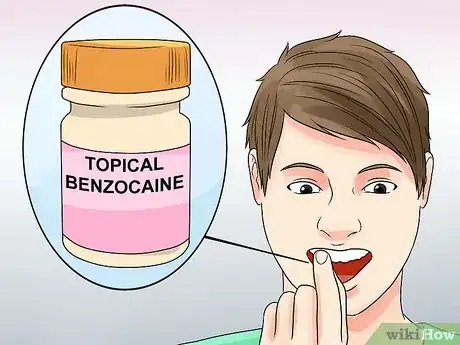
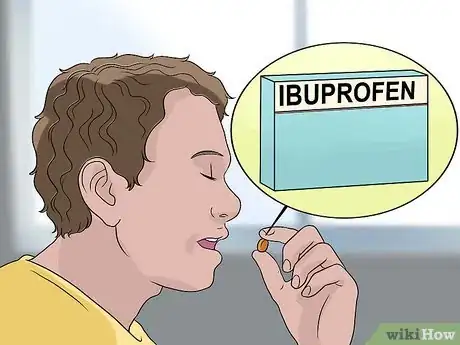

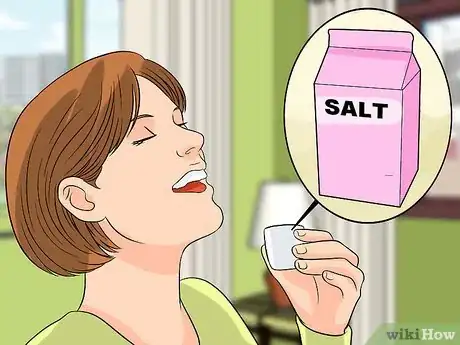
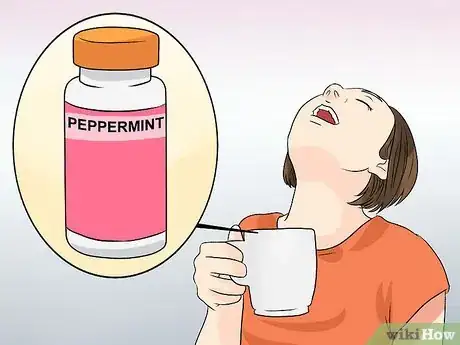

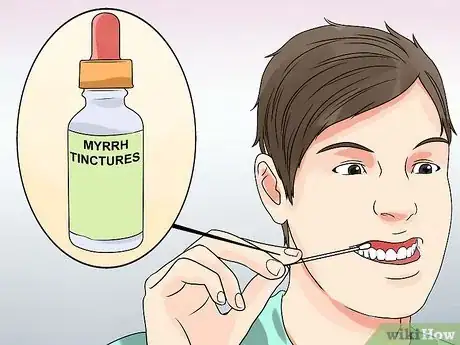




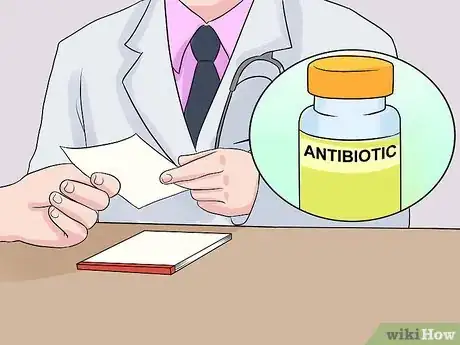

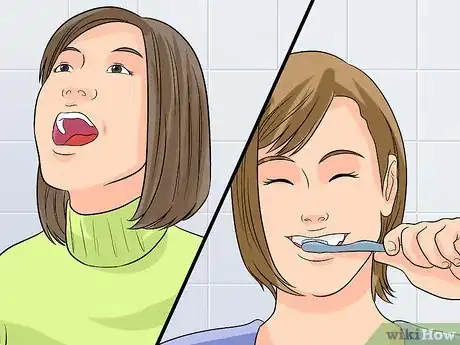
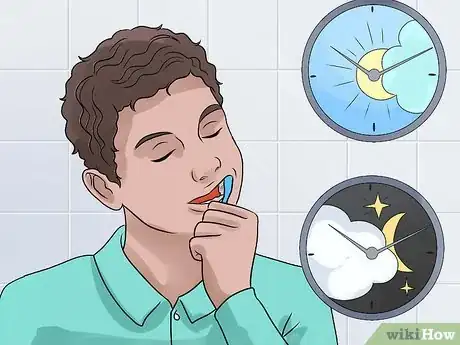
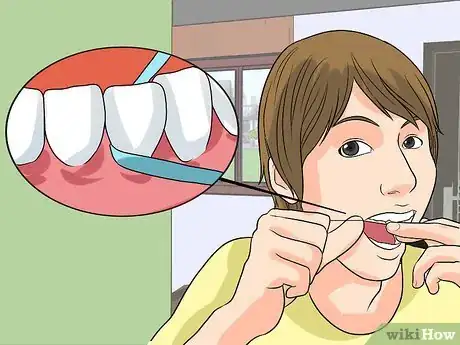




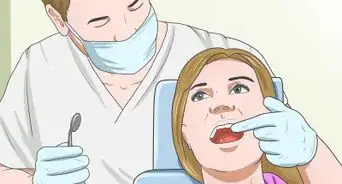







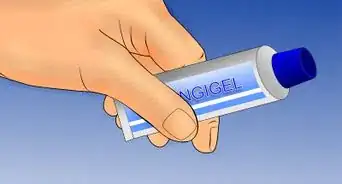


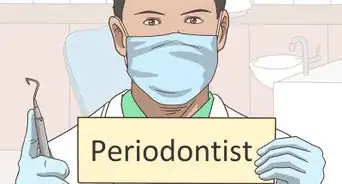








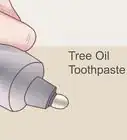






































Medical Disclaimer
The content of this article is not intended to be a substitute for professional medical advice, examination, diagnosis, or treatment. You should always contact your doctor or other qualified healthcare professional before starting, changing, or stopping any kind of health treatment.
Read More...